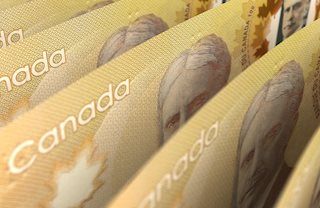USD/CAD recovers from 1.3800 as US Dollar bounces back
|
- USD/CAD rebounds from 1.3800 amid sharp recovery in the US Dollar.
- The Fed is expected to deliver a 50 bp rate cut in September.
- This week, investors will focus on the Canadian Employment data.
The USD/CAD pair bounces back from intraday low of 1.3793 to near 1.3856 in Tuesday’s North American session. The Loonie asset recovers as the US Dollar (USD) gains despite growing speculation that rate cuts from the Federal Reserve (Fed) will be sizeable.
An asset-specific action has been observed in global markets as United States (US) equities have rebounded, while risk-sensitive currencies continue to face a sell-off. S&P 500 futures have posted decent gains in the early American session. The US Dollar Index (DXY), which tracks the Greenback’s value against six major currencies, jumps slightly above 103.00. 10-year US Treasury yields jump to near 3.83%.
While the near-term outlook of the US Dollar remains uncertain on fears of potential US slowdown amid cooling labor market conditions. The US labor market struggles to bear the heat of Fed’s almost three-year long restrictive policy framework.
This has prompted expectations that the Fed will cut interest rates sooner rather than later. According to the CME FedWatch tool, a 50-basis point (bp) rate cut in September appears imminent.
Meanwhile, a slight upside in the Loonie asset and a sharp recovery in the US Dollar suggests that the Canadian Dollar is not significantly weak against other currencies. This week, investors will focus on Canada’s Employment data for July, which will be published on Friday. The Employment report is expected to show that the labor demand witnessed a fresh addition of 22.5K workers after noting a lay-off in June. The Unemployment Rate is expected to increase further to 6.5% from the prior release of 6.4%.
Canadian Dollar FAQs
The key factors driving the Canadian Dollar (CAD) are the level of interest rates set by the Bank of Canada (BoC), the price of Oil, Canada’s largest export, the health of its economy, inflation and the Trade Balance, which is the difference between the value of Canada’s exports versus its imports. Other factors include market sentiment – whether investors are taking on more risky assets (risk-on) or seeking safe-havens (risk-off) – with risk-on being CAD-positive. As its largest trading partner, the health of the US economy is also a key factor influencing the Canadian Dollar.
The Bank of Canada (BoC) has a significant influence on the Canadian Dollar by setting the level of interest rates that banks can lend to one another. This influences the level of interest rates for everyone. The main goal of the BoC is to maintain inflation at 1-3% by adjusting interest rates up or down. Relatively higher interest rates tend to be positive for the CAD. The Bank of Canada can also use quantitative easing and tightening to influence credit conditions, with the former CAD-negative and the latter CAD-positive.
The price of Oil is a key factor impacting the value of the Canadian Dollar. Petroleum is Canada’s biggest export, so Oil price tends to have an immediate impact on the CAD value. Generally, if Oil price rises CAD also goes up, as aggregate demand for the currency increases. The opposite is the case if the price of Oil falls. Higher Oil prices also tend to result in a greater likelihood of a positive Trade Balance, which is also supportive of the CAD.
While inflation had always traditionally been thought of as a negative factor for a currency since it lowers the value of money, the opposite has actually been the case in modern times with the relaxation of cross-border capital controls. Higher inflation tends to lead central banks to put up interest rates which attracts more capital inflows from global investors seeking a lucrative place to keep their money. This increases demand for the local currency, which in Canada’s case is the Canadian Dollar.
Macroeconomic data releases gauge the health of the economy and can have an impact on the Canadian Dollar. Indicators such as GDP, Manufacturing and Services PMIs, employment, and consumer sentiment surveys can all influence the direction of the CAD. A strong economy is good for the Canadian Dollar. Not only does it attract more foreign investment but it may encourage the Bank of Canada to put up interest rates, leading to a stronger currency. If economic data is weak, however, the CAD is likely to fall.
Information on these pages contains forward-looking statements that involve risks and uncertainties. Markets and instruments profiled on this page are for informational purposes only and should not in any way come across as a recommendation to buy or sell in these assets. You should do your own thorough research before making any investment decisions. FXStreet does not in any way guarantee that this information is free from mistakes, errors, or material misstatements. It also does not guarantee that this information is of a timely nature. Investing in Open Markets involves a great deal of risk, including the loss of all or a portion of your investment, as well as emotional distress. All risks, losses and costs associated with investing, including total loss of principal, are your responsibility. The views and opinions expressed in this article are those of the authors and do not necessarily reflect the official policy or position of FXStreet nor its advertisers.